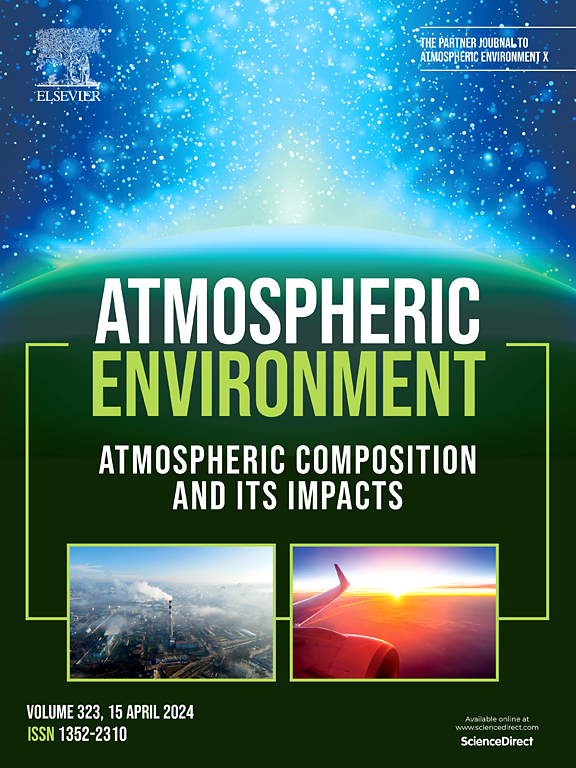Ozone pollution mechanism and VOCs emission characteristics in an oil industry city of northwestern China: analysis of a photochemical event using an observation-based model
IF 3.7
2区 环境科学与生态学
Q2 ENVIRONMENTAL SCIENCES
引用次数: 0
Abstract
Ozone (O3) pollution is a critical environmental issue, especially in rapidly developing industrial regions such as Dushanzi, an oil and petrochemical hub in northwestern China. This paper investigated the first 4-day ozone pollution event in Dushanzi in June 2023. Meteorological parameters, O3 and its precursor concentrations were utilized, combined with the Observation-based model (OBM), Positive Matrix Factorization (PMF), and backward trajectory analysis, to investigate the causes of ozone pollution in the region. The OBM-MCM model assesses the sensitivity of ozone and its generation-loss mechanisms, revealing that O3 is mainly generated through the HO2+NO pathway and lost via the NO2+RO2 pathway. On polluted days, the region falls into the VOCs-NOx collaborative control zone, with an optimal VOCs to NOx reduction ratio of 1:2. Under this reduction ratio, focusing on emissions reduction from the petrochemical industry, particularly controlling OVOCs, would be beneficial for reducing ozone pollution. Based on OFP and PMF analyses, petrochemical emissions were identified as the primary source of O3 pollution, with OVOCs contributing the most to O3 formation. Meteorological data revealed that high temperatures, low humidity and low wind speeds are external triggers of ozone pollution in the region. Meanwhile, the impact of long-range transport in the eastern Shihezi-Changji region cannot be ignored. This study provides important scientific basis for local governments to formulate O3 pollution control strategies.
西北某石油工业城市臭氧污染机制与VOCs排放特征:基于观测的光化学事件分析
臭氧(O3)污染是一个严重的环境问题,特别是在快速发展的工业地区,如中国西北的石油和石化中心独山子。本文对2023年6月独山子头4天臭氧污染事件进行了调查。利用气象参数、O3及其前体浓度,结合观测基础模型(OBM)、正矩阵分解(PMF)和反向轨迹分析,探讨了该地区臭氧污染的成因。OBM-MCM模型评估了臭氧的敏感性及其生成-损失机制,发现O3主要通过HO2+NO途径产生,通过NO2+RO2途径损失。在污染天数,该区域处于VOCs-NOx协同控制区,VOCs与NOx的最佳减排比为1:2。在此减排比例下,重点关注石化行业的减排,特别是控制OVOCs,有利于减少臭氧污染。基于OFP和PMF分析,石油化工排放是O3污染的主要来源,其中OVOCs对O3的形成贡献最大。气象数据显示,高温、低湿和低风速是该地区臭氧污染的外部触发因素。同时,长程输运对东部石河-昌吉地区的影响也不容忽视。本研究为地方政府制定O3污染控制策略提供了重要的科学依据。
本文章由计算机程序翻译,如有差异,请以英文原文为准。
求助全文
约1分钟内获得全文
求助全文
来源期刊

Atmospheric Environment
环境科学-环境科学
CiteScore
9.40
自引率
8.00%
发文量
458
审稿时长
53 days
期刊介绍:
Atmospheric Environment has an open access mirror journal Atmospheric Environment: X, sharing the same aims and scope, editorial team, submission system and rigorous peer review.
Atmospheric Environment is the international journal for scientists in different disciplines related to atmospheric composition and its impacts. The journal publishes scientific articles with atmospheric relevance of emissions and depositions of gaseous and particulate compounds, chemical processes and physical effects in the atmosphere, as well as impacts of the changing atmospheric composition on human health, air quality, climate change, and ecosystems.
 求助内容:
求助内容: 应助结果提醒方式:
应助结果提醒方式:


